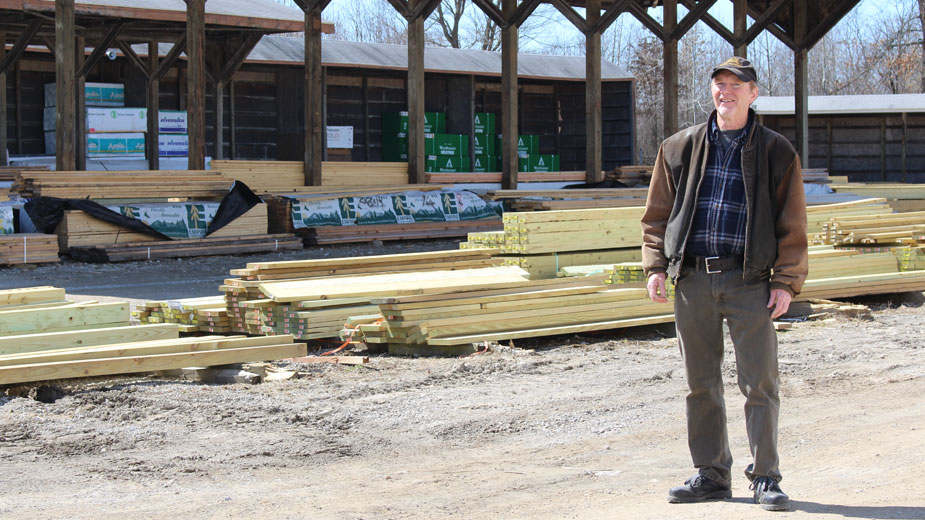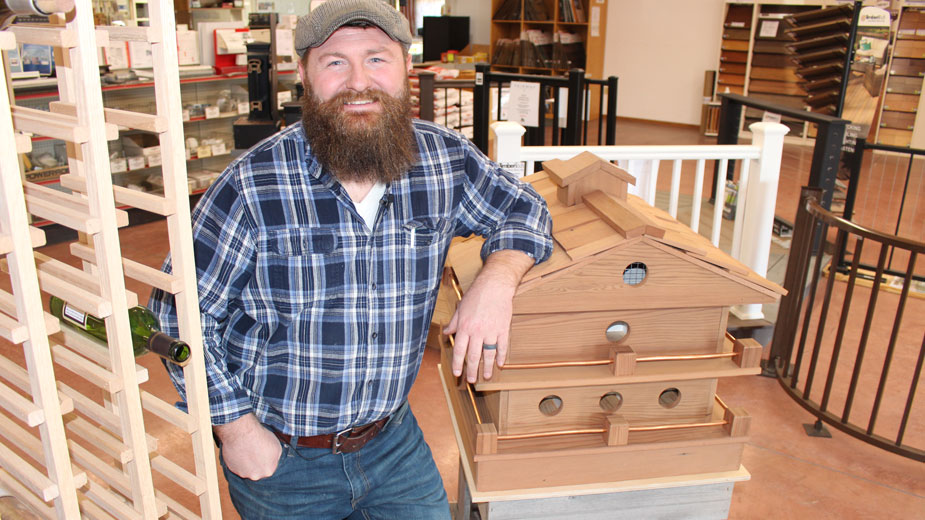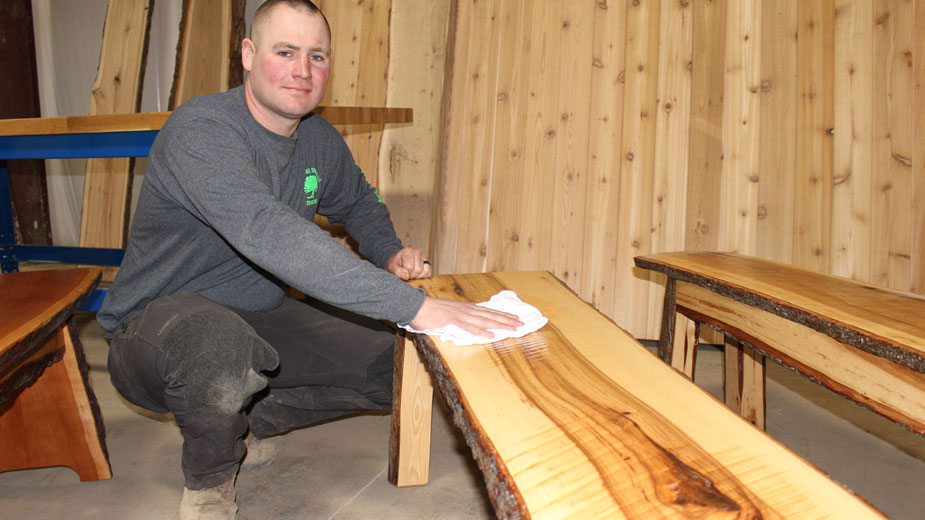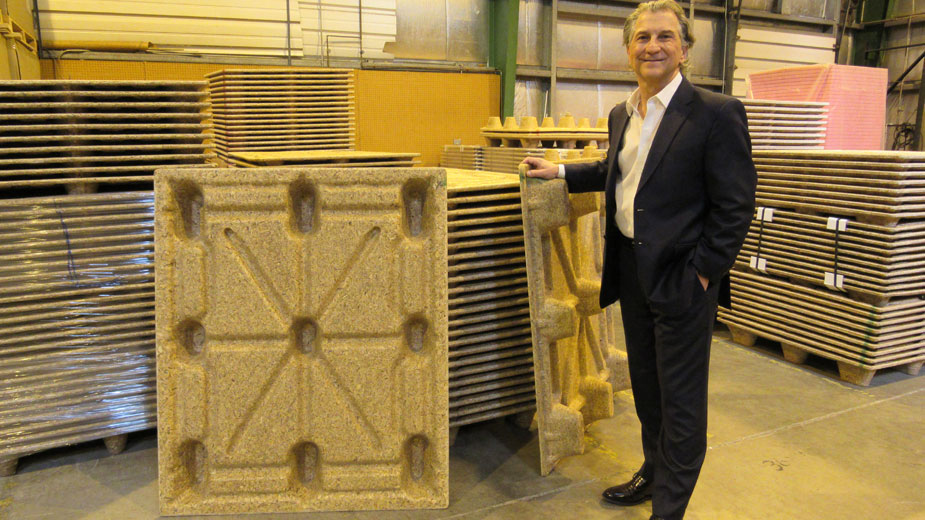Wood Product Companies Branch Out
YOUNGSTOWN, Ohio — When the real estate market collapsed in the Great Recession a dozen years ago, it took many building contractors and materials suppliers down with it. Few know this better than Donn McConnell, second-generation operator of Hubbard Lumber.
For the last 45 years, McConnell has worked at the company in Hubbard that his father, Hugh, started in 1945. It specializes in lumber and building materials for contractors who build upscale houses. The last 11 years, he says, have been the worst in the history of the company.
“There were 58 family-owned lumber yards [in the region] in 2007.” McConnell says. “There’s about seven of us left.”
The company made the decision to “hunker down” and weather the storm, forcing McConnell to cut staff and other expenses, he says. This year, he says, will be a turnaround year.
“We should double our volume this year from last year,” he says. “We’re glad to be getting out of survival mode.”
As the industry improves and contractors build again, McConnell has put together a new customer base. Many of his suppliers “went belly up” during the recession as well, so he’s had to find new sources for the Hem-Fir timber that comprises 95% of what the company stocks for dimensional lumber. The wood is trucked in from the West Coast.

“The Hem Fir has a higher tensile strength. It’s a lot stronger and stays straight better than the SPF [spruce-pine-fir],” he says. “This is a better quality product. It is a little bit more expensive. Not much, but we think it’s a better bargain.”
Diversification has been key to survival for wood-products suppliers in the post-recession market. Hubbard Lumber is no longer “just a lumber yard,” and now offers new product lines, including stone, brick and paver-deck material – something entirely new to the industry, he says.
“The foundation of the deck is still wood,” he says. “Everybody who has seen it loves it.”
Another new trend is using steel for roofing and sidewalls in lieu of fiberglass, he adds. “Vast improvements” to the finishes have minimized rust and sweating.
Other companies expanded into custom-made wood products. Among the windows, doors and kitchen cabinets in its showroom, M.E. Supply in Columbiana stocks one-of-a-kind items, including a wine rack, cabinet, a few hutches and a birdhouse.
All items are made in the company’s mill shop from reclaimed or scrap wood, says Cody Holmes, sales manager. Millwork and custom furnishings helped the company diversify and survive the recession, he says.

Until the early 2000s, the company had been running up to 40 loads of material daily, Holmes says. When residential construction work tightened during the recession, M.E. Supply saw carpenters with crews of three or four struggling to find work.
Wanting to support the people who supported the company since his father, Bob Holmes, took it over in 1995, M.E. Supply brought them on to do framing work. That morphed into the company framing-and-installed-sales department, which has expanded further over the last five years into custom-home design and general contracting for renovations.
“We would be able to frame a house and get windows and doors on, roof set, and walk away,” Holmes says. “That’s kind of grown into its own animal. We have certain staff and personnel who are dedicated to just that.”
While the company has always done millwork in some capacity – building stairs, countertops and cabinets in its shop – Pinterest and HGTV have driven demand for custom work made from repurposed wood, he says.
“We’re doing a lot more custom things,” he says. “That hammered, old, beaten stuff that comes from reclaimed products, that has really started to grow legs here in the last five to six years.”
Two years ago, Baird’s Tree Service began offering custom furnishings made from reclaimed wood, says its owner, Matt Baird.
The company, primarily a provider of tree-removal services, finds that response has been good for the products. Sales in 2018 doubled over the previous year, Baird says.
For an added cost, Baird’s makes live-edge furniture, which incorporates the natural edge of the wood into the design of the piece, including tables, benches, counter tops, shelves and mantels. Contractors also purchase wood slabs to use for custom work on a house. Most of the products tare made with timber they fell themselves.
“It’s endless what you can do with it,” he says. “Every piece is unique.”
Cost depends on the time and the piece, he says. Drying a slab can take up to a year, followed by several hours of work making the piece.

A recent piece is a table with steel legs that will sell for about $3,500, Baird says. The wood is from a dead ash tree in Poland that was 48 feet in diameter at its base and 100 feet tall. Dead ash trees are common because of the emerald-ash borer, a beetle native to northeastern Asia first discovered in the United States in 2002.
Baird has been stockpiling ash wood because he believes the decreased availability will drive up its value, he says.
“You don’t see it anymore. And now all the ash trees are dying and you’re not going to be seeing ash furniture,” he says. “It’s going to start being a hot commodity like walnut is. The price will start going up.”
In addition to using reclaimed woods, sustainability is important to wood-products companies. M.E. Supply and Hubbard Lumber get their timber from companies that plant two to three new trees for each tree felled.
McConnell recalls lobbying for sustainability decades ago. Sustainable policies allow for the harvesting of timber after a wildfire as well, he says.
“It’s dead, but it’s still viable,” he says. “It’s charred on the outside, but you can still get good wood out of it.”
Litco International Inc. in Vienna has cornered a niche market with its specialty line of Engineered Molded Wood pallets, made from reclaimed wood waste.
Waste is sourced within 60 miles of its manufacturing plants in Dover, Ohio, and Mississippi, including sawmills and lumber yards, as well as damaged logs and other solid-wood pallets, says Gary Sharon, vice president. Since it uses waste, Litco prices aren’t affected by lumber availability and price fluctuations, he notes.
“There is ample supply of waste-wood fiber for our needs,” he says. “Conversely, the solid-wood industrial lumber supply is tight and prices have been steadily increasing over the past few years.”
Litco uses a mix of hardwood and softwood fibers that aremcompression-molded at high temperatures under 1,200 tons of pressure, Sharon says. The design allows for “high strength, stiffness and edge impact resistance,” so the pallets can carry more static and dynamic weight load while using fewer materials and less energy, he says. The molded pallets are nestable, which makes stacking and storage much easier than traditional solid-wood pallets.
“Fifty pallets are in a seven-foot stack,” he says. “Companies that have limited warehouse space are naturally attracted to our pallets.”

That makes it easier for workers as well, adds Page Clayton, sales engineer at Litco. Solid-wood pallets can weigh up to 65 pounds, while Litco’s engineered pallets can be 20 pounds lighter.
“If you handle pallets by hand, day in and day out, it is a relief on one’s back,” Clayton says.
The process lends itself to one-way export of finished goods, which makes up 65% of business at Litco. Pallets used for exports must meet the IPPC-ISPM 15 regulation to prevent invasive pests from entering foreign countries, which requires additional heat treatment. Because the process at Litco uses high heat, “they are free of unwanted pests and are welcome, as is, into any trading-member country, Clayton says.
The pallets also are designated a USDA Certified BioBased product, which requires a product comprise at least 85% renewable, plant-based materials.
“We are the only source for this type of pallet in North America,” Clayton says. “The only other sources are located in Asia and Europe.”
Post-recession business is up for industrial-wood products as well. In 2009, the shipping-pallet industry hit a low point at $7.6 billion in output, according to the National Wooden Pallet and Container Association. Since then, it’s increased about 6% to $10.7 billion in 2016.
As demand for shipping pallets increases, Sharon expects that growth to continue. This year, Sharon is targeting a 7% increase for the Litco product line, provided the export markets pick up, he says. The company is also expanding into extruded products and this fall will introduce Engineered Extruded Wood blocks for use in solid-wood block pallets, he says, as well as a number of packaging and nonpackaging products.
“We are seeking prospective customers with needs for products and designs that would lend themselves to be produced on the extruding lines,” he says. “We expect startup to begin the fourth quarter of 2019.”
Copyright 2024 The Business Journal, Youngstown, Ohio.


